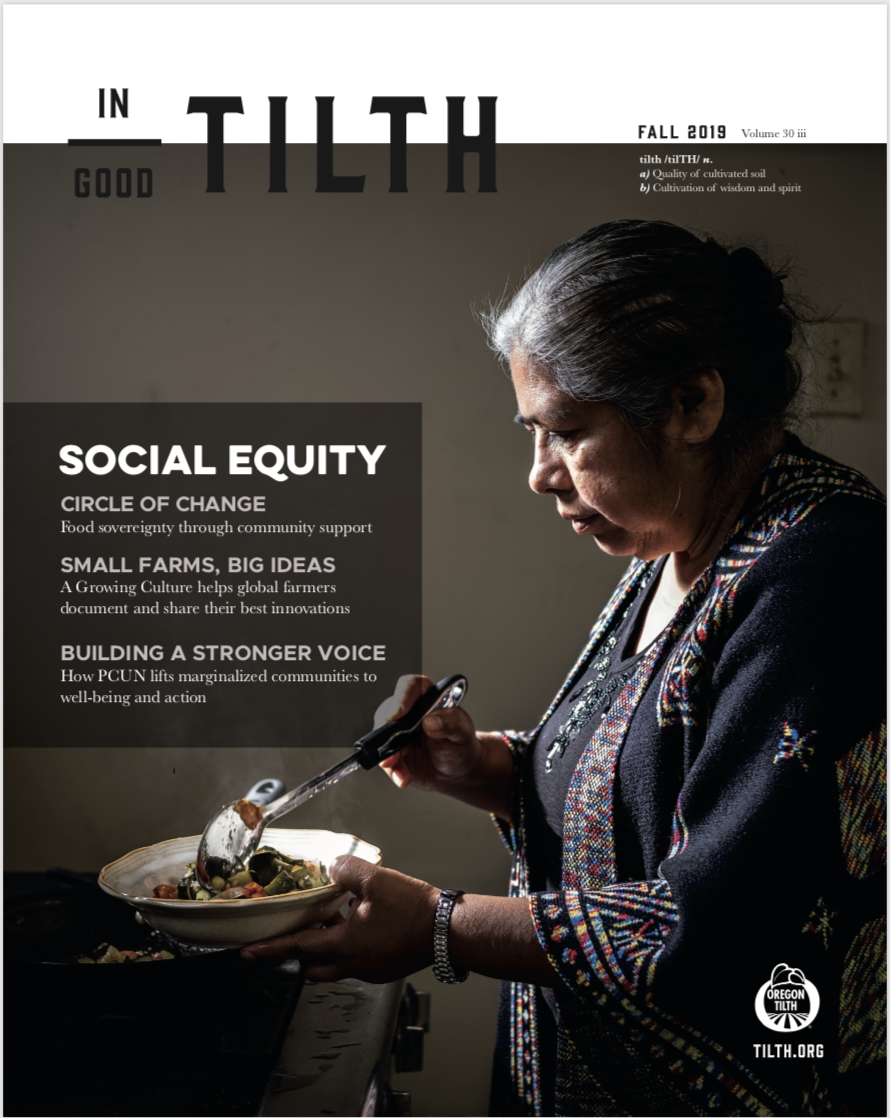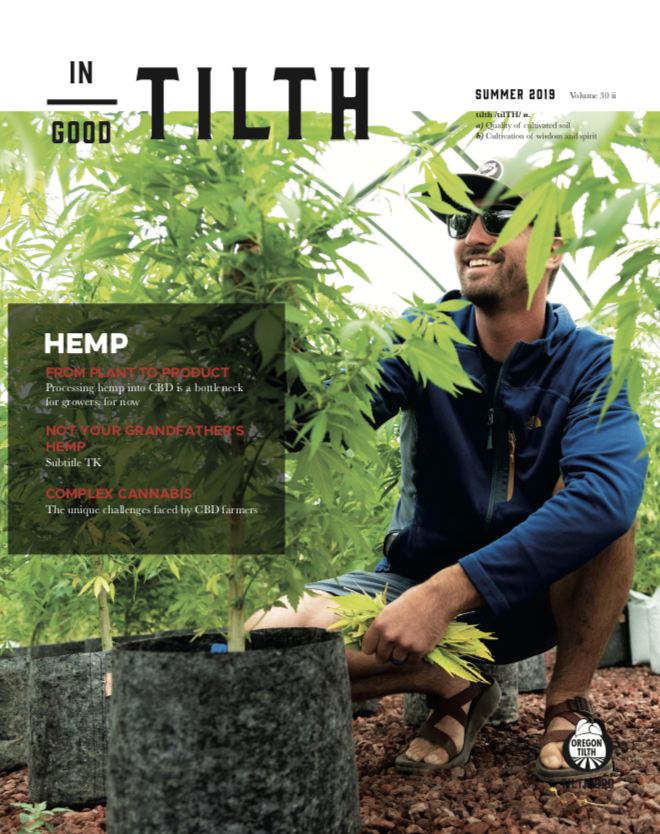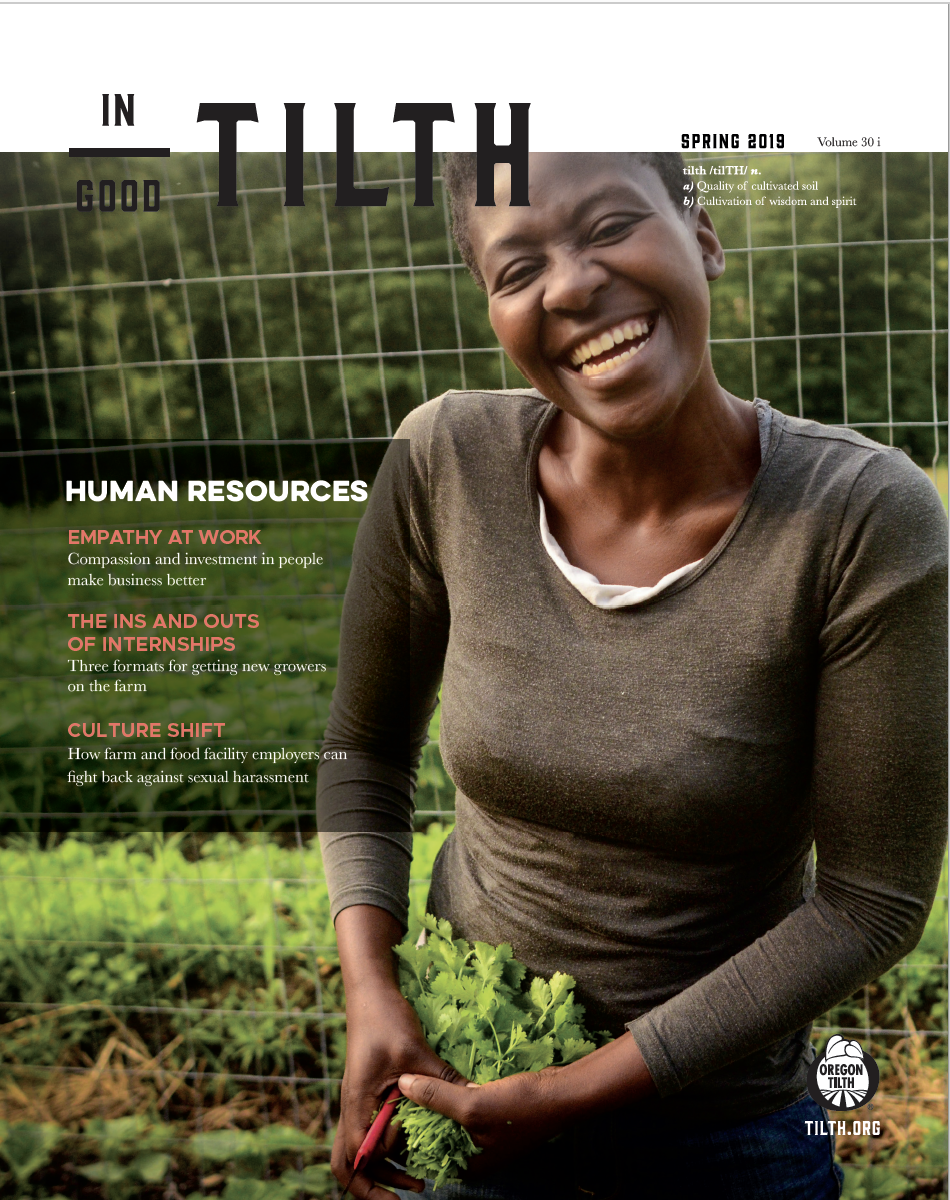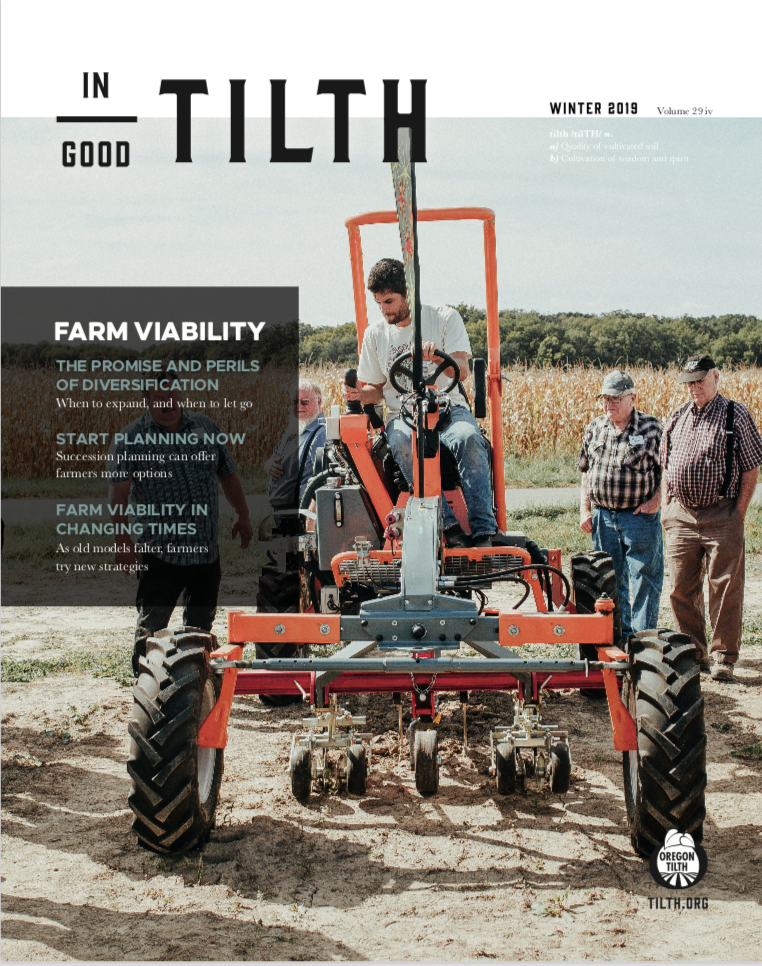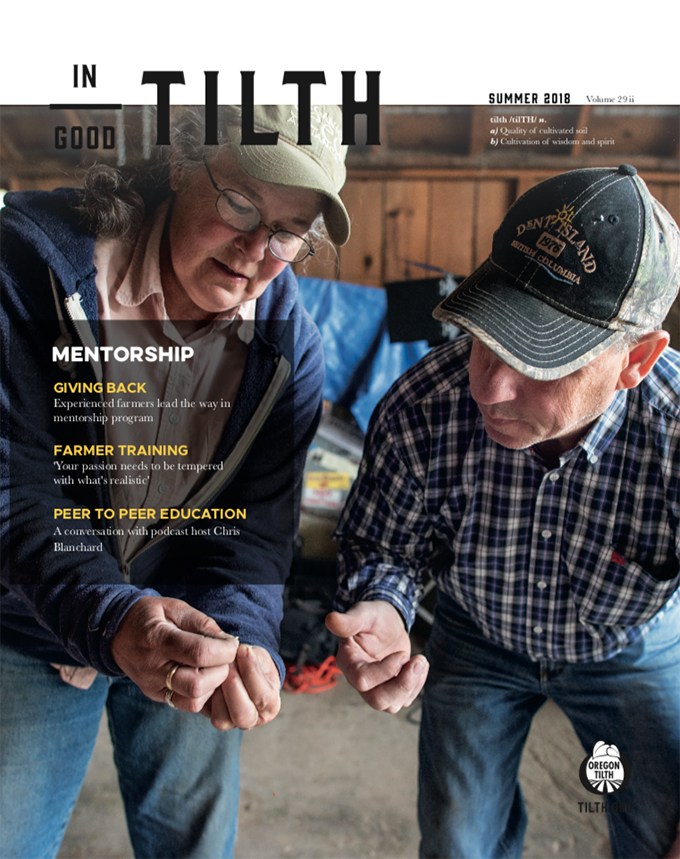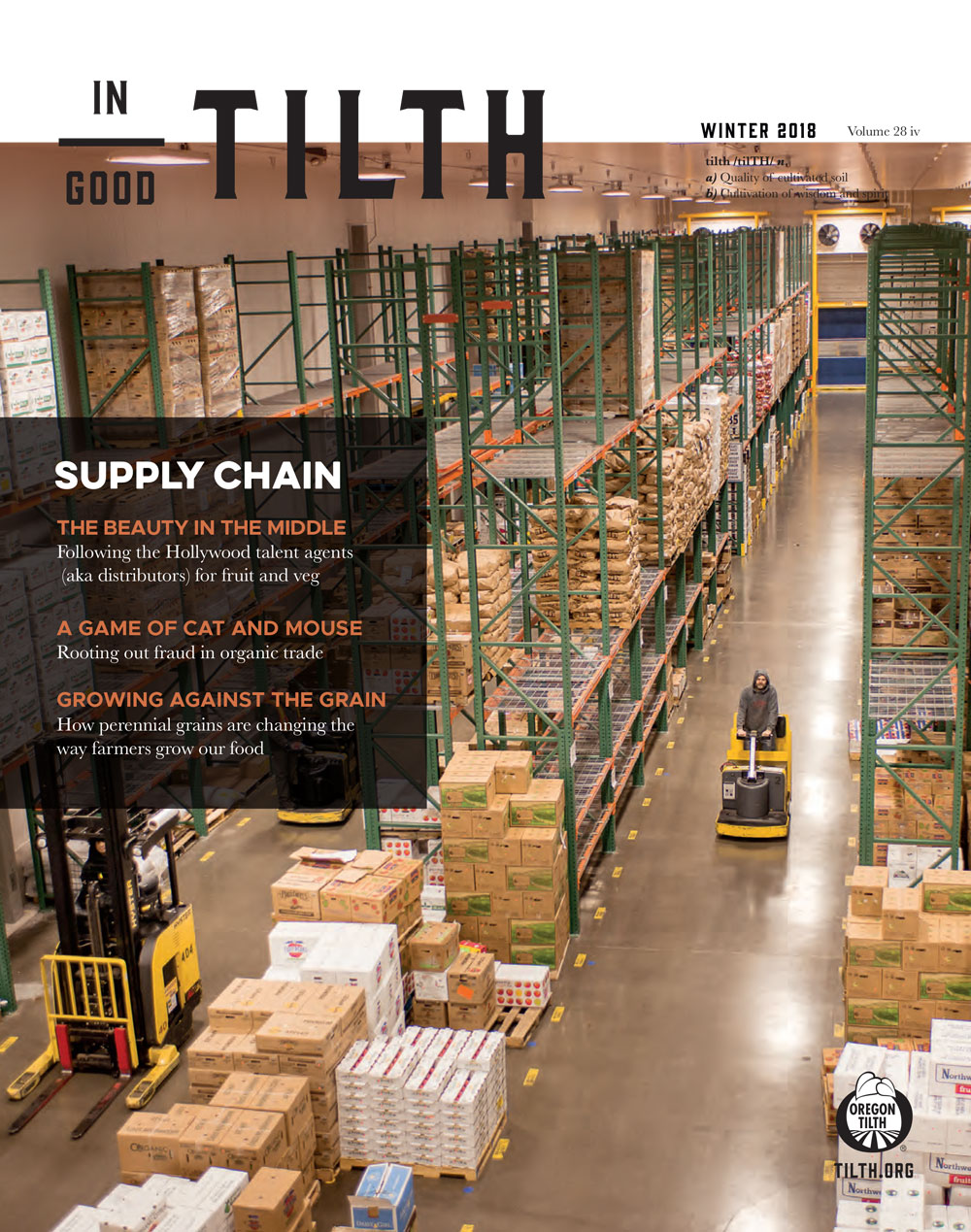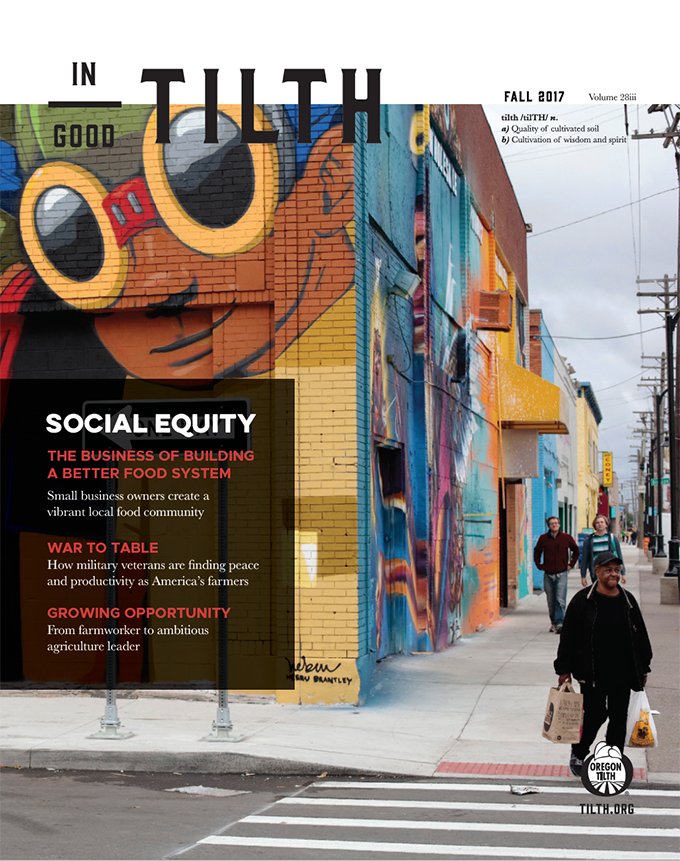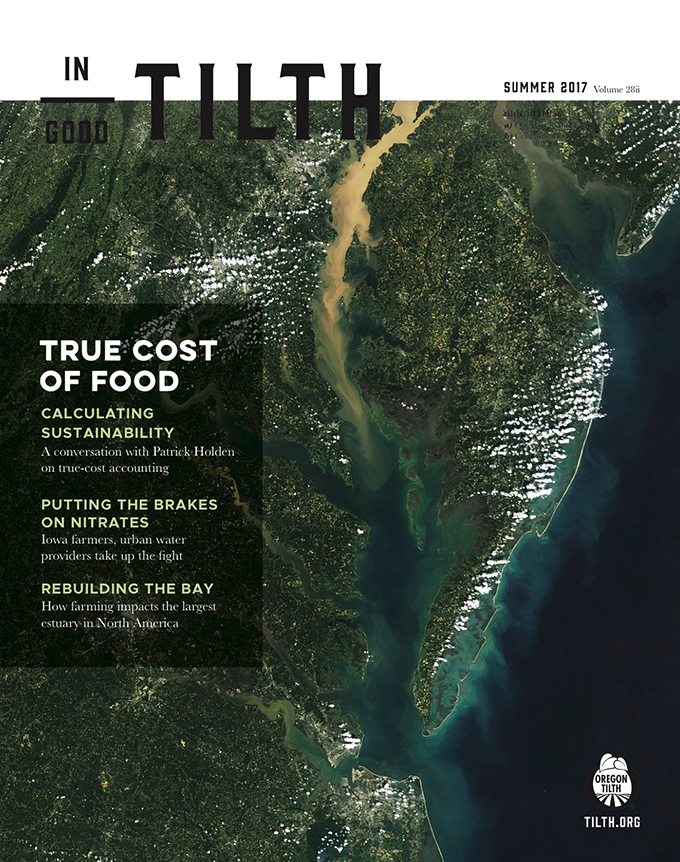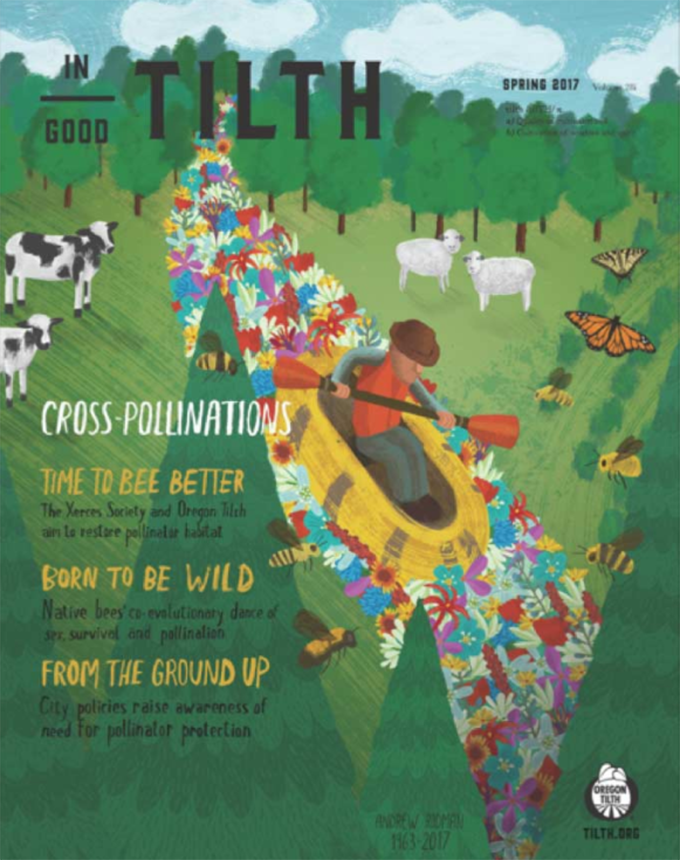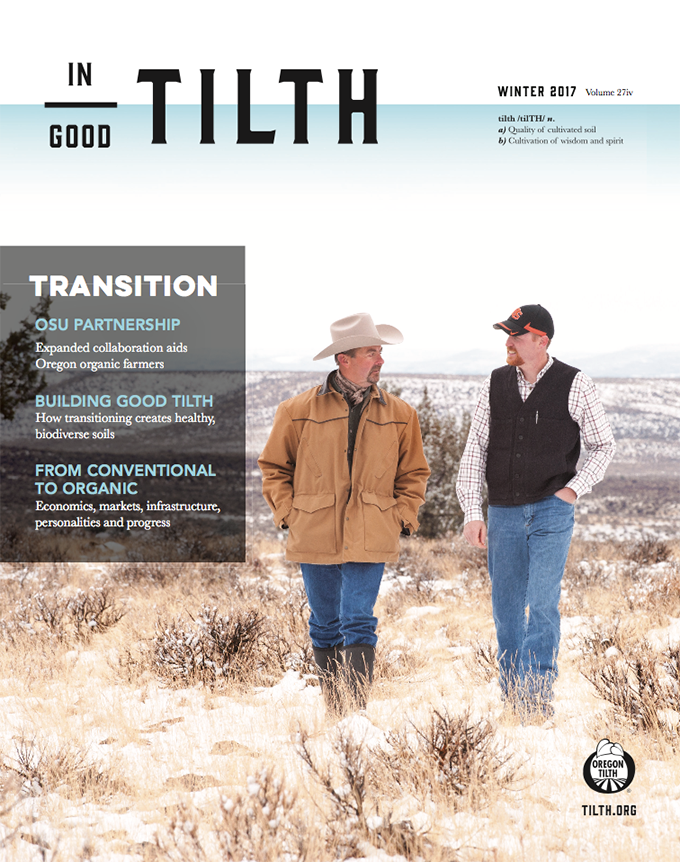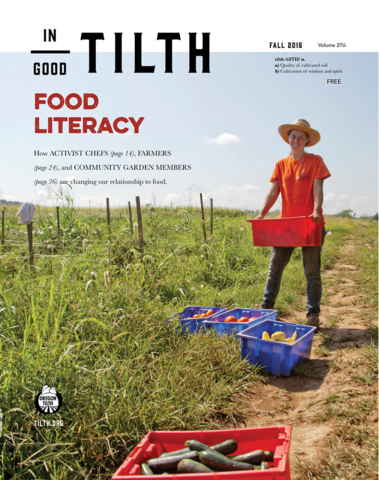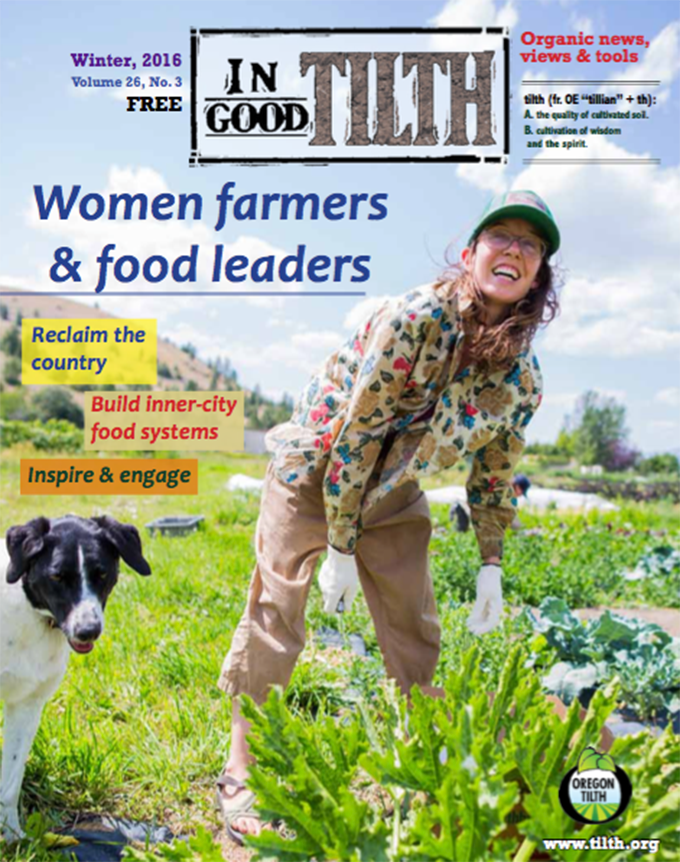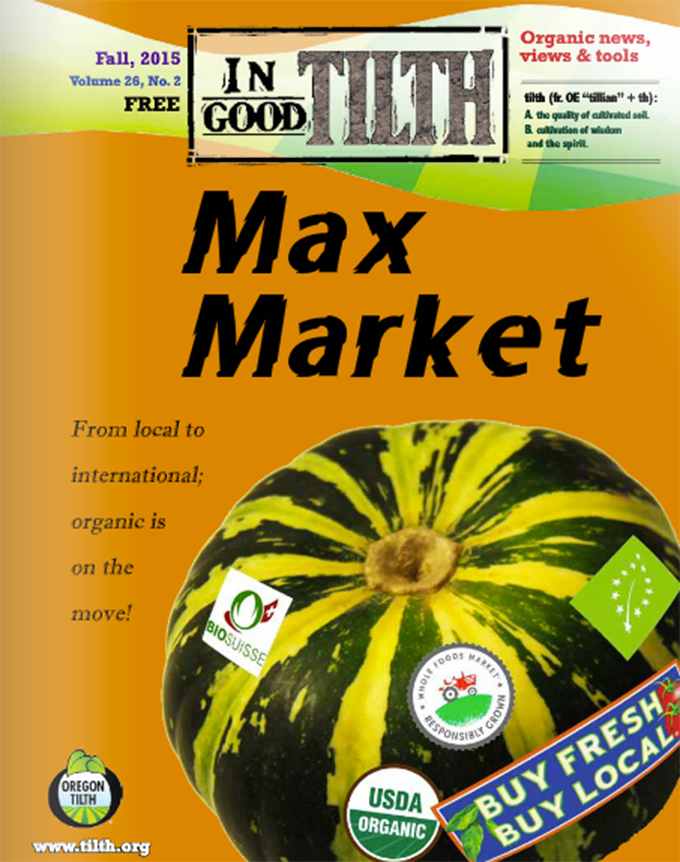It’s easy to feel that soil is beneath you. Most people never give it much thought, unless it needs to be swept out of the house, or the wrong soil pH is killing your azaleas.
But stand outside after a rainstorm and your nose tells a different story. That pleasant, earthy aroma (called petrichor) is the smell of soil coming alive. The mixture of seeds germinating, bacteria growing and plants decomposing all lend depth, giving petrichor a slightly different scent depending on where you are. These notes reflect the particularities of the soil, recent weather conditions, and the geological and biological history of that patch of land — what wine lovers would call terroir. The layered musk of petrichor is telling you what your eyes can’t — that soil is alive and complex.
And vital. We cannot survive without fertile soil in which to grow our food and fiber. However, we’re losing well over a billion tons of soil per year in the United States largely due to the soil-management practices of conventional, industrial agriculture. Common practices like regular tilling and keeping land bare and fallow over the winter leave degraded, unstructured soil that is liable to wash away in a heavy rain. The USDA estimates that the average conventional corn farm in Iowa lost 5.1 tons of soil per acre in 2007. Year after year, we are slowly losing our ability to grow the crops we need.
Stand on the riverfront in New Orleans and you can watch some of the 500 million tons of soil that flow out of the Mississippi River alone every year. In that murky water, you can see thousands of years of slowly accumulated soil drain from the continent. This soil runoff is clogging our waterways with sediment, fertilizers and pesticides. The sediment buildup necessitates ever more dredging to keep the river navigable. The pesticides are associated with a variety of negative environmental and public health consequences. The fertilizers cause massive algae blooms, which suck oxygen out of the water and create giant “dead zones,” where animals can’t survive. The dead zone at the mouth of the Mississippi has grown to roughly the size of Connecticut and is clearly visible from space.
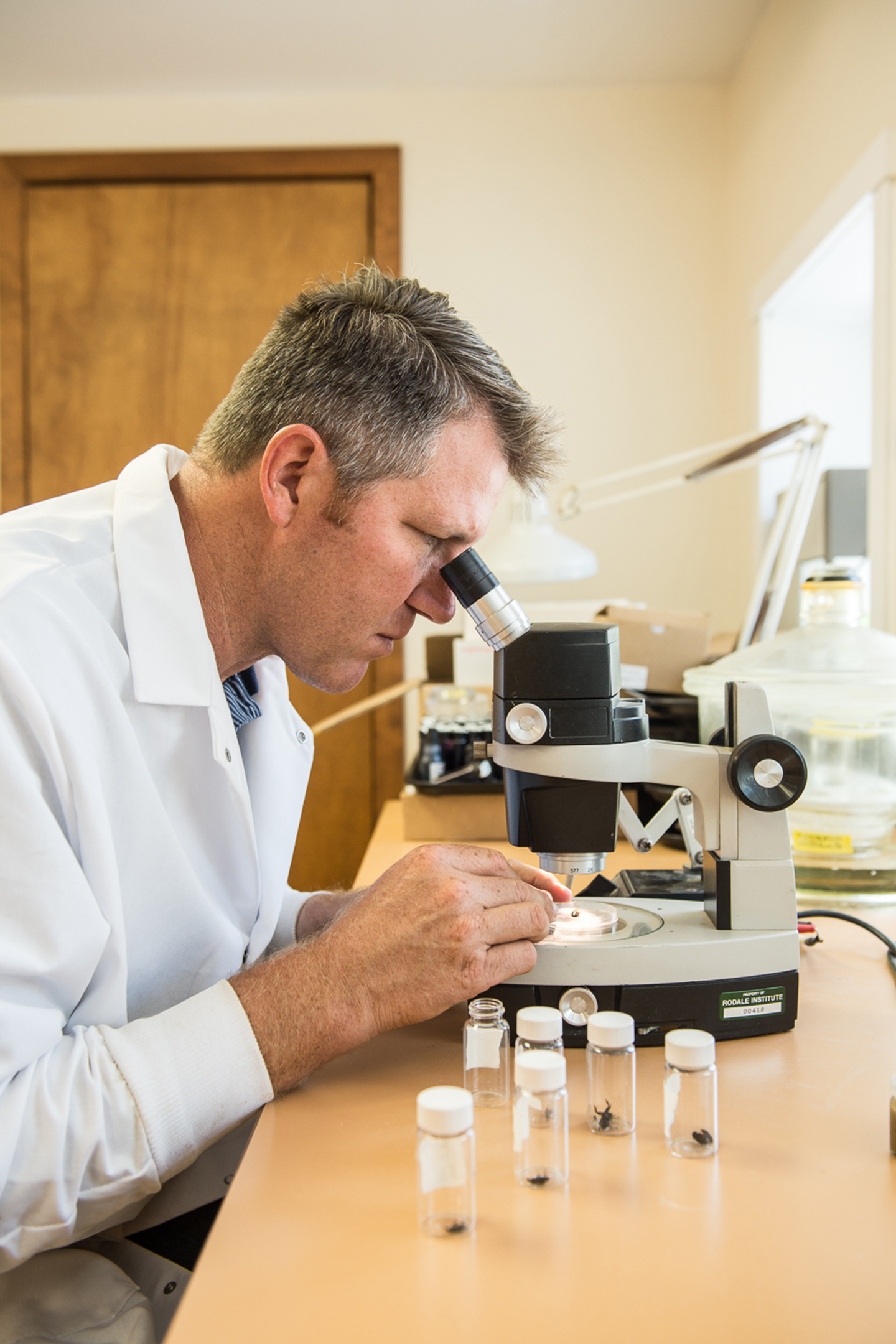
Beyond this local and continental-scale environmental havoc, poor soil management has global consequences. As soils degrade, they belch greenhouse gases such as carbon dioxide and nitrous oxide into the atmosphere, contributing to climate change. The UN’s Food and Agriculture Organization estimates that land use and soil management account for as much as a third of global greenhouse gas emissions.
As scientists and policymakers tally up carbon in the wake of the Paris Climate Summit (COP21), soils are gaining visibility as one of the most important parts of the equation. Globally, soils hold about twice as much carbon as the atmosphere. They could release that carbon into the atmosphere as they degrade. Or soil could act as a sponge, pulling carbon out of the atmosphere and thus combatting climate change.
It all depends on how soils are managed.
Dr. Kristine Nichols, a soil scientist who spoke at the COP21, says the discussion right now is about “stopping the hemorrhaging” of carbon from soil, particularly through no-till agriculture. Dr. Nichols hopes to push this discussion to building up healthy, biodiverse soils to take up and sequester carbon from the atmosphere while reducing the harm done by soil runoff. “When we look at climate change, we need a soil solution. It’s the most economically and ecologically viable approach,”she explained. “Our problem is a carbon problem, and it’s not the one you think it is. It’s not the amount of carbon in the atmosphere, it’s the amount in the soil.”
But what would a soil solution look like? This is the driving question behind Dr. Nichol’s work as chief scientist at the Rodale Institute, operating the longest-running agricultural comparison trial in the U.S., established in 1981. Long-term comparison trials like this quantify the impact of different agricultural practices on soil health over the multi-decade time spans that these effects play out. After decades of research, scientists like Dr. Nichols have built a detailed view of the nuanced ways that farming practices can alter the soil.
“We talk about soil health now, as opposed to soil quality,” said Jeff Moyer, executive director of the Rodale Institute. “Once you start talking about health, you’re talking about soil as a living thing…you’re talking about an ecosystem, not an inanimate substance.” Indeed, the inanimate, physical properties of soil that we care about the carbon content, the concentration and availability of different nutrients, the ability to hold water rather than wash away — are all intimately linked to the “consortium of organisms working together,” in the words of Dr. Nichols, “to make healthy soil.” To understand how this works, we must spend a moment with the animals, fungi, bacteria and other organisms in this consortium, as they work their way through the soil, cycle nutrients and structure their surroundings.
As crops photosynthesize, they use the sun’s energy and a little water to pluck carbon dioxide from the air and “fix” it into an organic form —sugar at first, and then the carbon-rich oils, starches, and fibers that make up the body of the plant. When the crops are harvested, a cast of millions of fungi, bacteria, worms and others — Dr. Nichol’s “consortium of organisms” — feed on the fibrous stems, roots and leaves left in the field. These decomposers get their energy by using oxygen to break the starches and fibers back into water and carbon dioxide.
Along with this carbon-based energy, decomposers get minerals and nutrients from the plant. They incorporate some of these nutrients into their bodies; these nutrients are said to be immobilized in an organic form. The rest of the nutrients are excreted and return to the soils in inorganic, mineral forms, a process called “mineralization.”
However, not all plant matter is decomposed. Under the right conditions, it can slowly accumulate and become part of the soil, instead of breaking down into carbon dioxide and mineralized nutrients. The digestive processes of certain animals like earthworms and springtails can ball up some of this nutrient- and carbon-rich plant matter with clay, in a process called “soil aggregation.” Soil aggregates lock up the nutrients and the carbon-rich fibers from the plant in clumps that oxygen cannot penetrate, making them resistant to further decomposition. Under particular conditions, these aggregates accumulate, one miniscule grain at a time, to build rich, dark, fertile topsoil called “humus.”
Farmers’ soil-management choices can have complicated consequences on these slow-motion, microscopic biological processes. In industrial farm systems, pesticides and heavy tillage kill soil organisms that are crucial to the buildup of humus. Tilling also increases the rate of decomposition by breaking up aggregates and introducing oxygen deep into the soil, allowing decomposers to mineralize the nutrients and break down organic matter into carbon dioxide. These mineralized nutrients are more likely to be washed away or lost than when immobilized in organic form, and the excess introduced in fertilizer make this likelier still. The conventional practice of leaving the land bare after harvest further exacerbates nutrient loss and runoff, as there are no cover crops to immobilize the nutrients nor roots to hold the soil in place. The lack of cover crops also reduces total amount of plant matter fed into the soil, starving soil decomposers and further reducing biodiversity.

Conventional soil-management practices can make short-term economic sense for the farmer. Tilling helps control weeds, and the flush of mineralized nutrients feeds the crops. Cover cropping is an added layer of effort, and the nutrients lost can be cheaply replaced with synthetic fertilizer. But decades of this kind of intensive, high input agriculture leaves desolate soil with neither the built-up plant matter nor the diverse decomposers needed to create humus. The breakup of soil aggregates leaves soil without the pores and channels needed to absorb water. This is the kind of structureless, dead soil that washes into rivers with each heavy rainfall.
However, with proper soil management, a farmer can build the soil back up, by tilting the balance between aggregation and decomposition, and between nutrient immobilization and mineralization. “We need to take an ecological approach, by getting a greater amount of biodiversity in the system,” noted Dr. Nichols. “Aggregation is a physical phenomenon that has a biological basis to it.”
Extended crop rotation and cover cropping both increase plant diversity, in turn feeding diverse decomposers in the soil, since each plant is food to a different organism. Cover crops also immobilize excess nutrients by incorporating them into their bodies, and they physically hold the soil in place with their roots. Legume cover crops can also introduce nitrogen fertilizer into the soil through symbiotic interactions with bacteria in the soil. By feeding the soil large quantities of diverse plant matter, and not disturbing it by tilling, farmers can promote the biodiversity needed to build up nutrient-rich, porous humus, build soil structure that resists erosion and sequester carbon.
Now that we’re beginning to understand how these practices work on a mechanistic level, they can be optimized. Jeff Moyer, the Rodale Institute’s executive director, says, “Basic research can move the needle for scientists and policymakers, but to help farmers implement strategies to manage their soil differently, we need hardcore, applied science guiding management decisions. We’re talking about modern agriculture using modern science.”
While practices like cover cropping and crop rotation date back to ancient times, their precise and scientific implementation couldn’t be more cutting edge. Different soil and weather conditions demand different rotational schemes and different species, or varieties, of crops and cover crops. Dr. Michel Cavigelli, the lead scientist on the USDA’s Farming Systems Project, a long-term agricultural comparison similar to Rodale’s, noted that, “you can conduct an organic farm in a way that loses nutrients as well. The devil is in the details. Quantification is needed to show what strategies farmers should use.”
But how can these ideas and practices be transplanted from experimental plots to real farm fields, where farmers might understandably care more about their yield than the biodiversity of fungi in their soil? Dr. Nichols, who is from a farming family, understands that her message, “can be hard to hear, and a little unbelievable at first. Farmers, for very good reason, need immediate gratification. You need to target something to fix when things are going south. It’s hard to take a step back and change the whole system. We don’t have the patience to wait for the system to right itself — we’re human and we live in the real world.” It’s all well and good to talk about reducing soil erosion and carbon emissions, but what good does that do a farmer who needs a solid harvest each year to make ends meet?
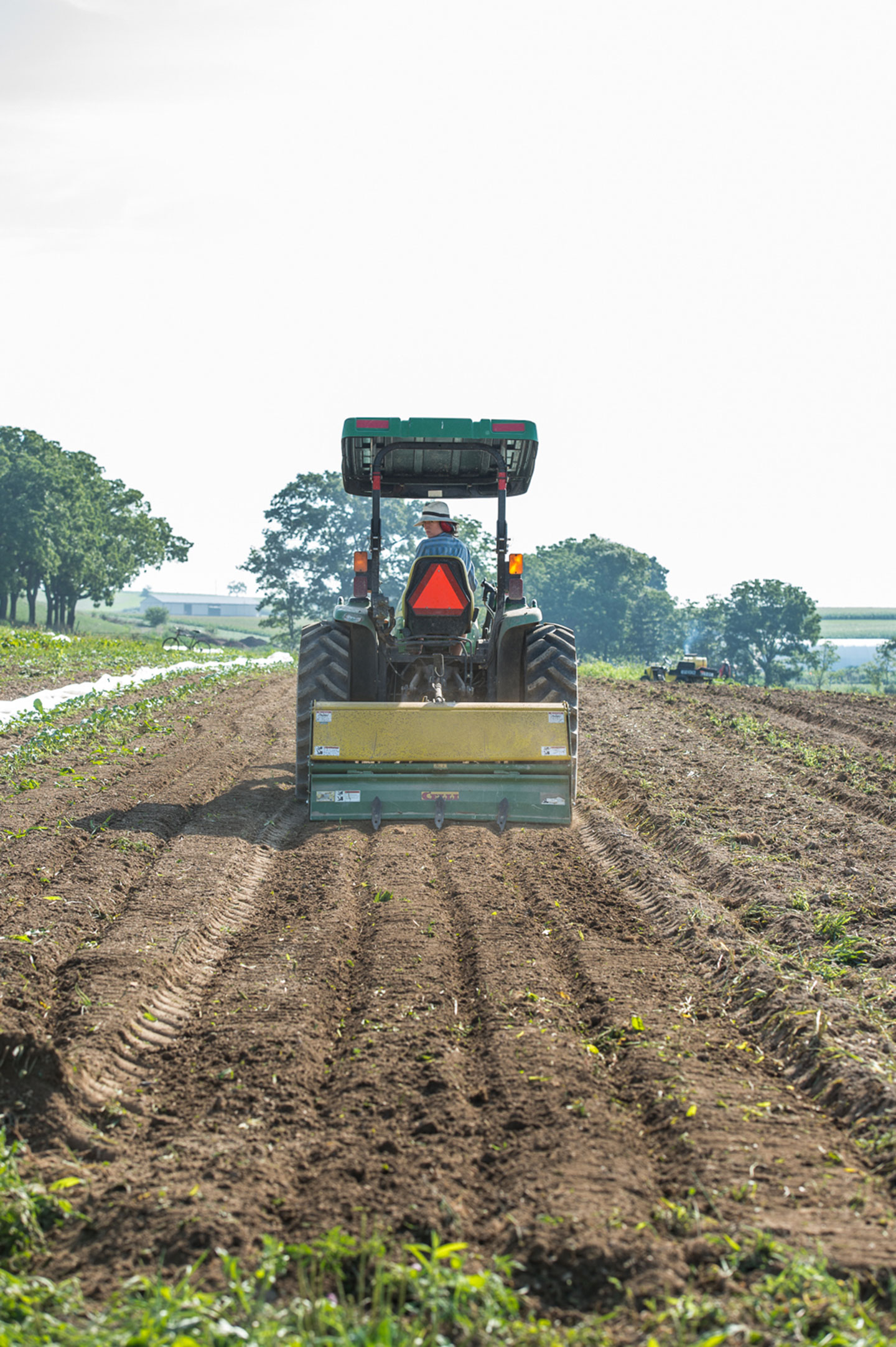
Unfortunately, our agricultural policy framework exacerbates this problem. By subsidizing and incentivizing intensive conventional agriculture, and providing no assistance for practices like cover cropping that we know can benefit the soil, our agricultural policy locks into place the management practices that are hemorrhaging soil into waterways and emitting carbon dioxide into the atmosphere. There is some intrinsic motivation for a farmer to reduce soil erosion on their farm, especially in drylands, where the soil is fragile and can easily blow away in the wind. In wetter areas with deep topsoil — areas where the majority of crops are grown — the incentive to retain soil is outweighed by the profits that come from maximizing yield. At least, in our current incentive structure.
This problem is exemplified by the organic certification process, which requires a three-year transition period during which no synthetic pesticides or fertilizers can be applied to a field. Many soil-building processes take years to get going, as plant matter builds up and diverse organisms driven out by conventional agriculture recolonize the field. In the meantime, a farmer must make do with the poor yields that come from degraded soil unamended by synthetic fertilizer, and without the benefit of the price premium that comes with organic certification. This wait can easily break the bank for a farmer and keep them trapped in conventional agriculture even if they want to make the switch. “Policy decisions are a stumbling block, holding back the growth of sustainable practices,”said Moyer.” The Farm Bill policy framework isn’t geared toward change, it’s geared toward maintaining the status quo.”
While the case is strong that lobbying by big agrochemical companies influences our farm policy, this can only happen with the tacit acceptance of the public. Here, we must look to ourselves. “People are completely disconnected from soil, the source of our livelihood,” said Dr. Clay Robinson, known to many as “Dr. Dirt,” a soil scientist committed to visiting schools and evangelizing about the importance of soil. “With just a little knowledge,” he says,” people can start asking the right questions about where their food comes from, and recognize that that all comes from soil…without it, we’d be hungry, naked and homeless.” Already, the cultural attitude toward soil is beginning to change. High-level diplomats are negotiating about tillage and cover cropping in fancy conference rooms in Paris, no-till and low-till agriculture are on the rise and organic food commands a price premium on the market.
Soil is a humble substance. It is complex and fascinating in its own way but not given to poetic overtures. It is not likely to steal the environmental spotlight from climate change, nor impress its vital role in society in the way that clean water or a stable food supply might. And yet, soil influences these critical resources profoundly, and much else besides. The science is now clear; we’re at a point where we can look at soil vanishing into the water and air and see it for the quiet catastrophe it is. It is also clear that we can do something about it.


